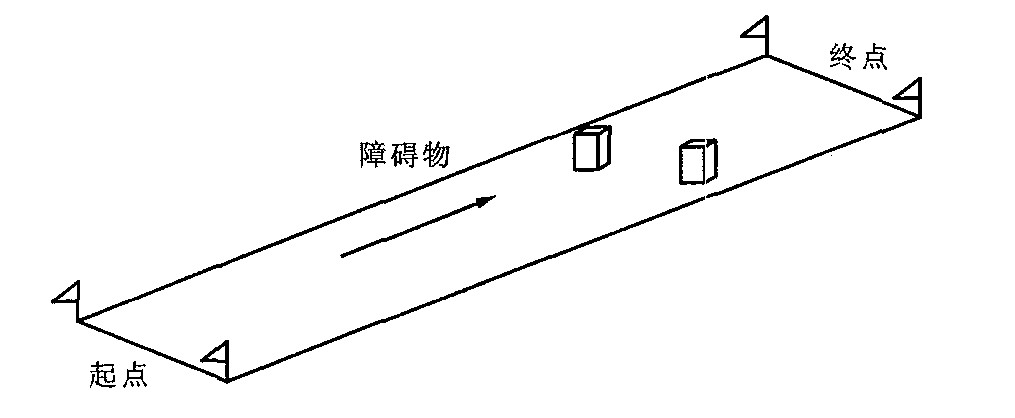Fixation distribution of driver while driving through passageways with different widths
Article Text (Baidu Translation)
-
摘要: 为分析驾驶员感知-判断-操作行为模式, 对驾驶员在通过不同通道宽度障碍物时的动态视觉进行研究。用眼动仪等设备记录了驾驶员在通过设定障碍物间的通道宽度时眼睛注视点的变化和相应的车辆行驶速度, 分析了在7.04、.4、3.5、3.0和2.0 m五种通道宽度条件下驾驶员注视点变化的分布规律。试验结果显示, 无障碍物时, 对应通道宽度为7.0 m, 驾驶员注视点在车辆前方较远处和道路的中央区域; 通道宽度较充裕时, 对应通道宽度为4.4和3.5 m, 驾驶员注视点主要在左侧障碍物和道路中央; 通道宽度较窄时, 对应通道宽度为3.0 m, 驾驶员注视点频繁在左右两侧障碍物间移动; 随着驾驶任务难度增加, 驾驶员的注视点分布区域变近, 视线的变化频率提高。Abstract: In order to understand the perception-decision-operation pattern of driver, the eye movements and fixation distributions of driver, and relevant vehide speeds were measured by eye-measured instrument while driver drove between two barriers with five different space widths, which are 7.0, 4.4, 3.5, 3.0 and 2.0 m. Analysis result of driver fixation distributions concerning different widths shows that driver concentrates his vision on the central area of road and farther to vehicle when there were no barriers on road (referring to 7.0 m space width), he concentrates his vision on the central area of road and left barrier when the space is enough to pass (referring to 4.4 and 3.5 m space widths), he quickly scans between barriers when the width becomes narrow (referring to 3 m space width), he fixates closer to vehicle and his fixation duration decreases when the driving task becomes more difficult to fulfill.
-
Key words:
- traffic safety /
- driver /
- driving pattern /
- fixation distribution /
- eye movement
-
表 1 设定条件
Table 1. Designed conditions
条件 状况 障碍物宽度/m Ⅰ 无障碍物 单向双车道, 路面宽度7.0 Ⅱ 足够充裕 4.4 Ⅲ 较为充裕 3.5 Ⅳ 勉强通过 3.0 Ⅴ 无法通过 2.0 -
[1] Dewar R E, Olson P L. Human Factor in Traffic Safety[M]. Tucson: Lawyers and Judges Publishing Company, Inc., 2001. [2] Tagare H D, Toyama K, Wang J G. A maximum-likelihood strategy for directing attention during visual search[J]. IEEE Transactions on Pattern Analysis and Machine Intelligence, 2001, 23(5): 490-500. doi: 10.1109/34.922707 [3] Underwood G, Chapman P. Driving experience attentional focusing and the recall of recently inspected events[J]. Transportation Research, 2003, 6F: 289-304. [4] Underwood G, Chapman P, Bpwdem K, et al. Visual search while driving: skill and awareness during inspection of the scene[J]. Transportation Research, 2002, 5F: 87-97. [5] Crundal D E, Underwood G. Effects of experience and processing demands on visual information acquisition in drivers[J]. Ergonomics, 1998, 41(4): 448-458. doi: 10.1080/001401398186937 [6] 张殿业, 金键, 杨京帅, 等. 驾驶员身心条件安全可靠性综合评价[J]. 中国公路学报, 2004, 17(4): 96-100. https://www.cnki.com.cn/Article/CJFDTOTAL-ZGGL200404021.htmZhang Dian-ye, Jin Jian, Yang Jing-shuai, et al. Psycho-physiological evaluation of driver safety reliability[J]. China Journal of Highway and Transport, 2004, 17(4): 96-100. (in Chinese) https://www.cnki.com.cn/Article/CJFDTOTAL-ZGGL200404021.htm [7] 潘兵宏, 赵一飞, 梁孝忠. 动态视觉原理在公路线形设计中的应用[J]. 长安大学学报: 自然科学版, 2004, 24(6): 20-24. https://www.cnki.com.cn/Article/CJFDTOTAL-XAGL200406005.htmPan Bing-hong, Zhao Yi-fei, Liang Xiao-zhong. Application of dynamic vision theory in highway alignment design[J]. Journal of Chang'an University: Natural Science Edition, 2004, 24(6): 20-24. (in Chinese) https://www.cnki.com.cn/Article/CJFDTOTAL-XAGL200406005.htm [8] 张建峰. 汽车驾驶员动态视觉对感知-决策-校正模式的影响研究[D]. 西安: 长安大学, 2004. -





 下载:
下载:







